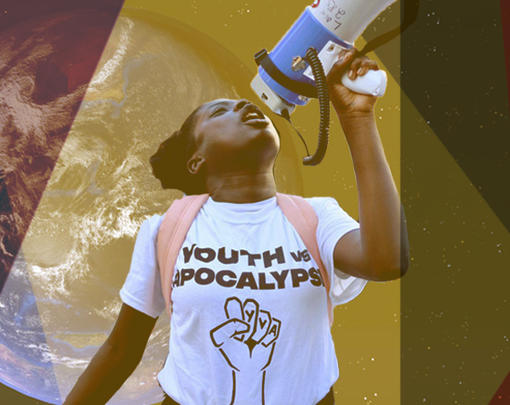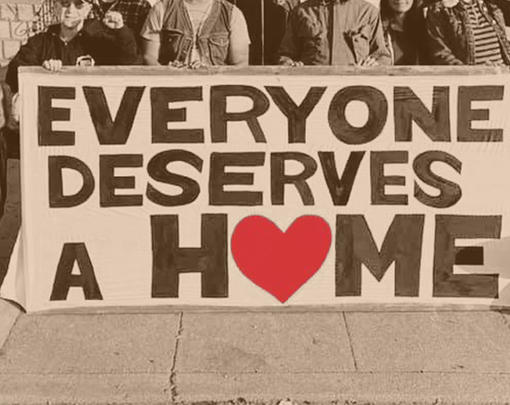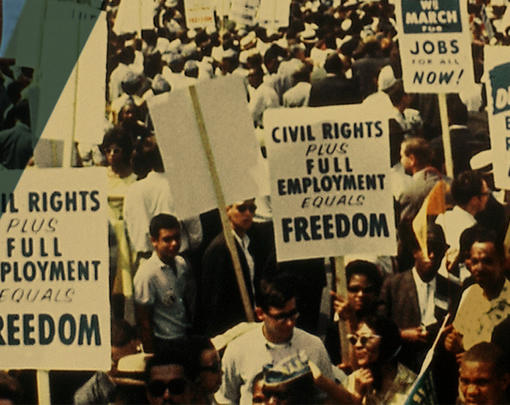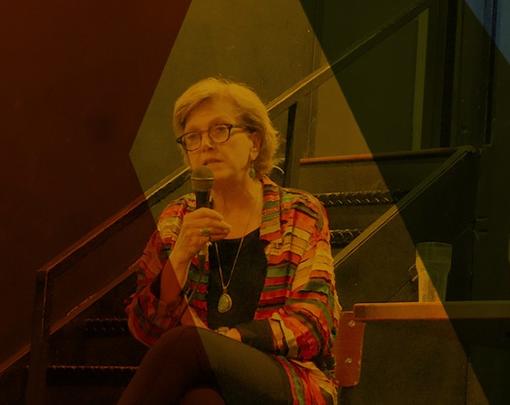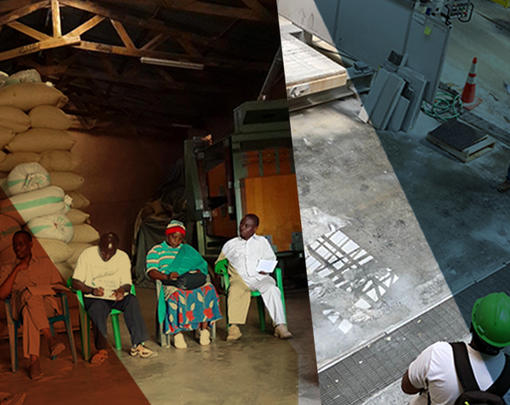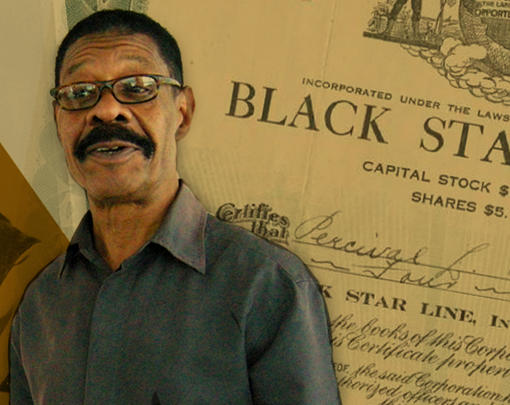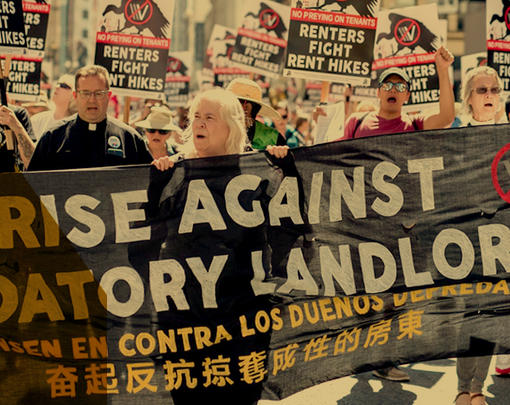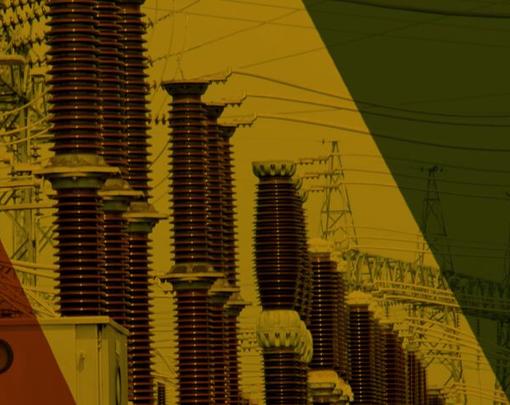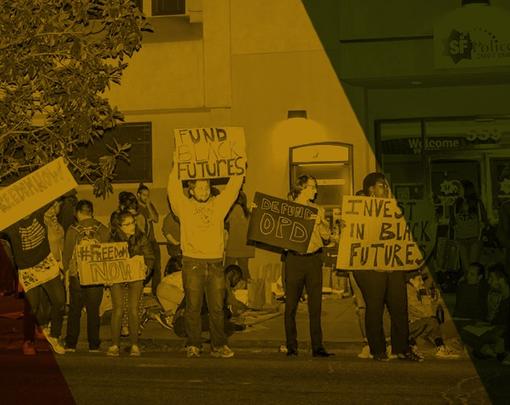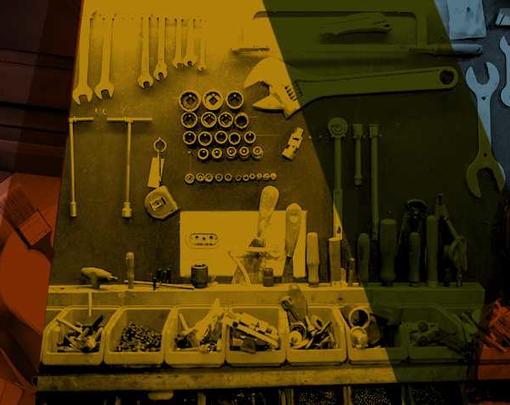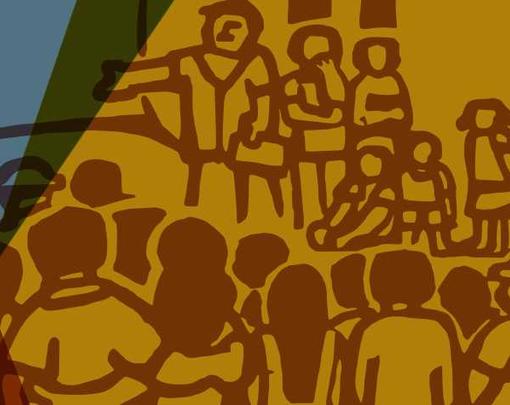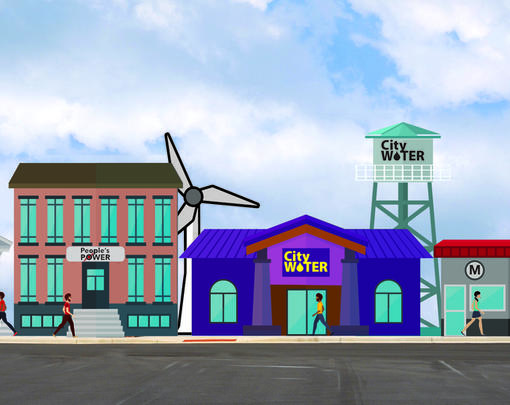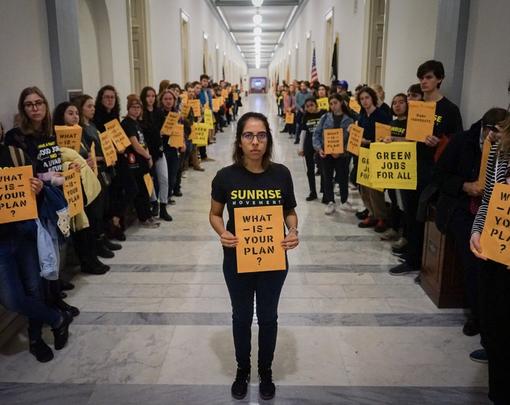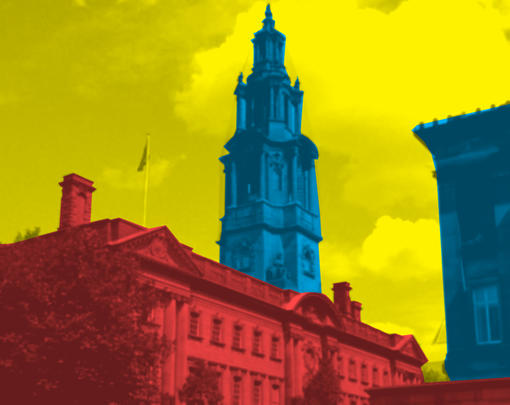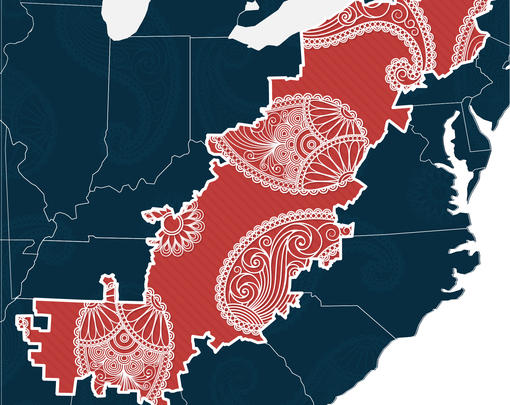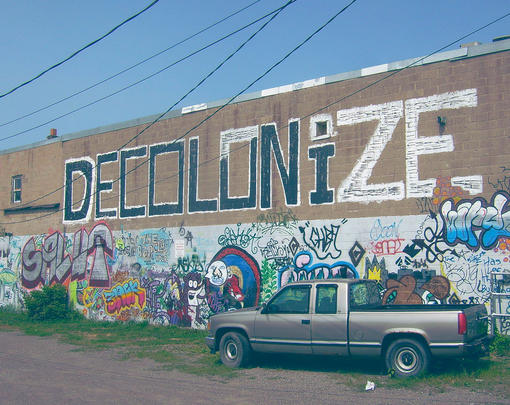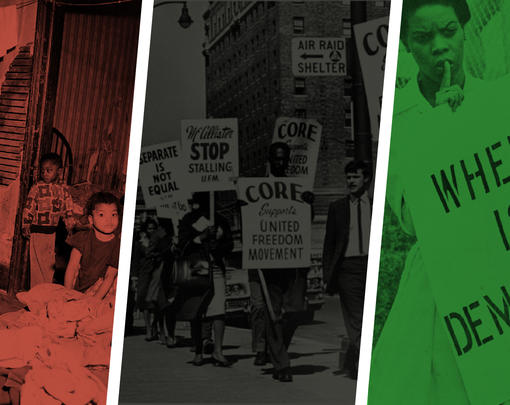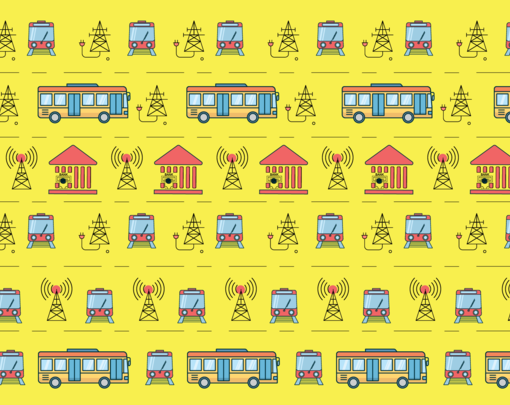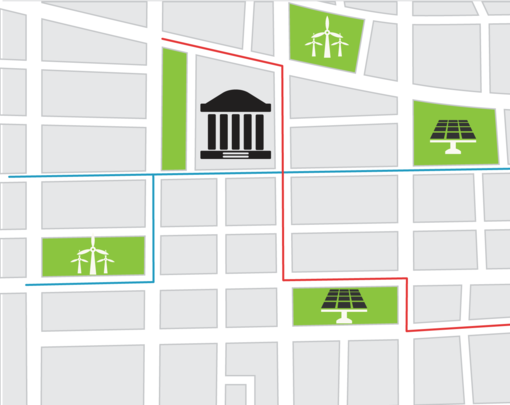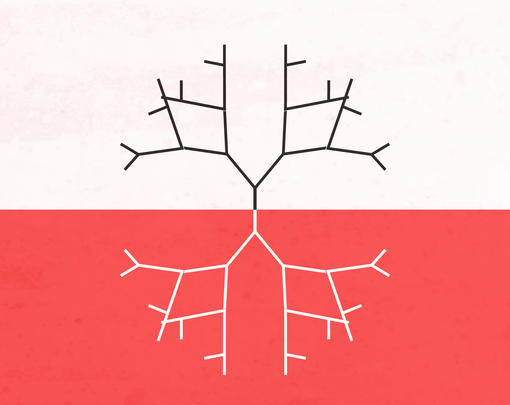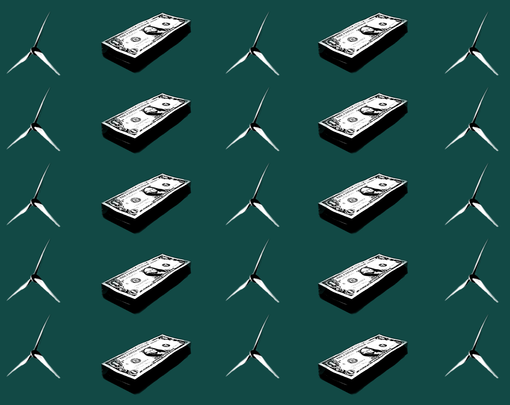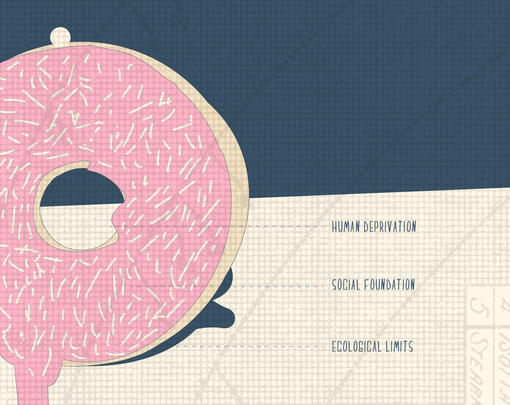This week Adam is joined by the Next System Project’s Research Associate Cecilia Gingerich to interview Pavlina Tcherneva about the transformative potential of a federal job guarantee. Pavlina is an Associate Professor and Chair of the Department of Economics at the Levy Economics Institute, Bard College.
Subscribe to the Next System Podcast via iTunes, Soundcloud, Google Play, Stitcher Radio, or RSS.
Adam Simpson: Welcome back to The Next System Podcast, I’m your host Adam Simpson. My co-host today is Cecilia Gingerich, a research associate at The Next System Project interested in rural economic development as well as gender and systemic design. Cecilia, thanks for joining me today.
Cecilia Gingerich: Thanks for inviting me. Our guest today is Pavlina Tcherneva, Associate Professor and Chair of the Department of Economics at the Levy Economics Institute, Bard College. Pavlina is a key proponent of Modern Monetary Theory (MMT) as well as a supporter of a federal job guarantee, the subject of today’s episode. Pavlina, welcome to The Next System Podcast.
Pavlina Tcherneva: Hi Adam, hi Cecilia.
Adam Simpson: Before we jump straight to the job guarantee I think it’s necessary to frame the subject of MMT, because it’s likely not a coincidence that so many of your colleagues that advocate for MMT also tend to advocate for the federal job guarantee. How would you describe MMT and what do you think sets it apart from typical conceptions of monetary policy?
Pavlina Tcherneva: MMT is really a perspective, a lens through which we can understand government spending and from there the economic possibilities. We study money—not just the history of money, but the actual monetary system within which we live, how the Federal Reserve operates, how the Treasury operates, essentially how the government funds itself. One of the key propositions that we make is that, in the modern world, the government is the source of the currency: it is the monopoly issuer, it has the exclusive right to issue currency. While popular rhetoric is constantly emphasizing that somehow the government has run out of financial resources, this cannot possibly be true. If you have a monopoly over the currency you cannot possibly—just as a matter of logic—run out of financial resources. What the government needs is real resources.
What MMT tries to do is flip the conversation and say, “Hey look, let’s recognize the fact that we do have the power of the purse. We do have institutions that make sure that government checks do not bounce.” The real question is “What do we do with this spending power?” Then, that opens the conversation to discussing the possibility of implementing all sorts of policies that previously we were told were out of reach.
Cecilia Gingerich: One of those policies is the federal job guarantee or employer of last resort (ELR). What would you say are the key components of that kind of policy? And why do you view it as a critical shift?
Pavlina Tcherneva: The job guarantee is a policy that fulfills a promise. If we look at the UN Declaration of Human Rights, that declaration affirms the right to decent work, at decent pay, and decent working conditions. Many constitutions around the world promise to guarantee that right. The United States has a full employment mandate as a policy guideline but we don’t fulfill that promise—the job guarantee does that. It fulfills that promise. It says that if there is a person out there who would like to work at decent pay, with decent working conditions, we can guarantee it as a matter of policy. The job guarantee is a policy that basically says we will provide employment on demand to anyone who wishes to work and has not been able to find adequate employment opportunities.
It’s a policy that creates genuine full employment. Today, we pay lip service to the concept. If you listen to the Federal Reserve you would think we already had full employment, but there are countless people who are outside of the labor market, who have been discouraged. There are many others who are juggling part-time jobs trying to make ends meet. And there are others still who wish to work, but they essentially are the invisible unemployed. There is that other problem that the labor market has become increasingly precarious. It’s been very difficult to find good, decent remunerative employment. What the job guarantee does is establish a standard. It’s essentially a public option for work at base pay which says “we believe that no one should fall below this income level and we believe that we should provide a public option for jobs.”
Adam Simpson: I wanted to follow up there with the notion of underemployment. When we talk about a federal job guarantee, obviously, this would solve the problem of unemployment but what effect would a job guarantee have on underemployment, which seems to be an increasing trend that, as you implied, isn’t fully covered by the Federal Reserve’s notion of full employment?
Pavlina Tcherneva: The way I envision the job guarantee is that it’s a public program that is federally funded and locally administered. It could be administered by localities, municipalities, nonprofits, and social entrepreneurial ventures. It is a policy that also is designed around people’s own needs, the community’s own needs, and with the person in mind. We fit the job to the person—not the way it’s normally done in the private sector where you have to jump through a lot of hoops to prove that you fit a particular job or work tasks that the private sector has outlined in their job ad. In this case, we say, “Look, we guarantee decent employment and decent pay to do work for the public good, and we will provide work options that are full-time work options, part-time work options on demand.”
What will that do to underemployment? If there are lots of people who are in search of full-time work, above poverty work, living wage work those people can come into the program. They are right now technically underemployed; they are working a couple of jobs but they would much rather have one stable employment opportunity. In that respect, we offer that option in the public sector and that has a little bit of a disruptive effect on private employment practices. If the private sector wants to bring back those people into the private labor force, they have to meet the conditions that have been established in the public option.
Adam Simpson: What type of work do you think would be done under a federal job guarantee program?
Pavlina Tcherneva: This is a policy that serves the public good, at least that’s how we talk about it, that’s how we envision it. It is a program that fills gaps in the public sphere. The way I like to think of it is that we can launch a “National Care Act” by which we can outline areas that need more work. Care for the environment will be one of the very first things I would think of. You can just do a Green New Deal of sorts and create millions and millions of good well-paying jobs for the public good to transform our economy to a sustainable green future.
The next one would be communities. How many communities are decimated because they have lost factory jobs, mining jobs, and even tech jobs that have moved from state to state? How many cities suffer from dilapidated, vacant lots? We have so much cleaning up to do. That is millions of jobs. The third component would be care for the people. Care for elderly, care for veterans, care for children, at risk youth—anyone essentially.
As we design these jobs we should consider what kinds of things would make our and their lives materially better? Let’s say, you’re a veteran. One of the challenges you face is finding employment after you return from duty. At the same time, you suffer from a series of problems that all sorts of outreach programs are attempting to address. Through the Job Guarantee, you become the provider of the very service that you need. So, from a “patient of change” or a “patient of government policy,” you become the “agent of change.” Young people can be trained to rebuild parks, basketball courts, or skating rinks, etc. They become involved in the very creation of the public services that they use. That is true community building.
Cecilia Gingerich: You mentioned caring for people as well as communities. Of course, most care work currently is being done by women, and its often unpaid labor at the moment. If you could just talk a little bit more about how a federal job guarantee would impact gender equality and maybe impact that current disparities in care work?
Pavlina Tcherneva: Because the job guarantee does a lot of care work, part of what we are attempting to do is to help socialize some of the care burden that parents, and women in particular, face. Women still tend to be the ones taking care of sick, elderly parents. They are still the ones taking care of children and doing a lot of the household work. They face something called a ‘double shift.’ In other words, they have to go to work because the family is having trouble, or the average family is having trouble sustaining their standard of life. They are going to work but at the same time, when they come home they have another job to perform.
What we noticed is that the double shift is acute—not just for women, but for men as well, for parents in general. It’s mornings and evenings and so when we design the job guarantee we need to keep these things in mind. I would include countless before- and after-school activities to be part of the job guarantee to alleviate some of the care burden of parents. What do parents do or usually women do? They sacrifice working hours to be able to go and pick up kids from school, they are the buffer. They basically sacrifice their work options to be able to attend to the family care needs.
Now, imagine if you had an employment option that was mother-friendly or parent-friendly, that gave you flexible working hours and a part- or full-time option, that also incorporated afterschool activities, afterschool activities you needed for your own kids, so you can spend that extra hour at a job you like or do something else. The socialization is one aspect of the job guarantee. The socialization of care work is one aspect that will improve the gender outcomes.
Number two: we do find that bargaining power changes when women have decent work; they like their work, and they can generate income and bring it home. Number three though, the job guarantee establishes a base income floor. We pay the same amount to men and women. There is no pay gap or pay disparity at the bottom, because the job guarantee essentially establishes the minimum wage for the economy as a whole. We have actually seen this. There’s a very large-scale job guarantee program in India and there are some studies that have looked at the wage gap between men and women in the private and public sector. They find, that as a consequence of their job guarantee, that gap has closed at the bottom of the income distribution. Certainly, in the public sector the gap is almost nonexistent. There is some small gap still, but by comparison with private sector work it’s very different.
Socializing care needs, from community health centers to better care for the elderly, all of these things are also ways of alleviating the care burden for parents. Of course, I would supplement the job guarantee with other programs that are parent-friendly, that are there for parents irrespective of whether they work or not. For example, something like a universal child allowance.
Adam Simpson: You’re talking about a lot of socially useful work and work for the public good. A lot of this work from care work to environmental cleanup seems crucially important. One of the questions I have about conceptualizing this as an employer last resort program has to do with contrasting that with public sector employment that does useful like things. We might not necessarily want care work or environmental clean-up to be drawn down once the private sector starts to pick up the slack. What will a rebounding economy mean for these programs that we care about and would be very useful? Would those programs go away?
Pavlina Tcherneva: The purpose of the program is to employ anyone who wants to work at that base wage benefit package. That’s the purpose of the program. It’s not to work until they find work in the private sector. When you frame it this way, then it becomes workfare, which is like saying, “Oh well, you know, you can’t have that right to work guaranteed unless you’ve been looking in the private sector.” Or, “We’ll take it away as soon as we think the private sector’s ready to hire you.” The job guarantee is not workfare.
The labor market is a fluid thing. People come in and out of jobs as they please all the time. They move in from public sector jobs into the private sector and vice versa. The job guarantee is just a guarantee for work at a base pay. What people do afterwards is their business in a sense. What we have seen—at least from some experiments—is that when the economy picks up and the private sector starts offering higher wages then people will transition to those opportunities. There is that inherent feature of the program, that pool of people in the job guarantee will likely shrink as they move to better opportunities, economic opportunities.
Your question is, what if these people are doing something that we really value and we don’t want to give up when they start moving to the private sector? That’s a problem that we face anyway. We need public school teachers, but some public school teachers go to private schools. We always face this. If you really believe that these are essential jobs that must be done on ongoing basis we can, in a way, reclassify them to make them permanent just like public school teachers. If we believe that green jobs need to be there for years to come then we will do this. We will, again, need to make sure that those programs are permanent, permanently funded. In that case, we might provide incentives for people to stay should they want to go elsewhere.
The main idea for the job guarantee is that there’s always going to be somebody who’s going to be laid off, they’re going to be laid off from some job and they may have trouble getting back up on their feet, they might want to work, they may not want to stay on unemployment insurance, and they need to have an alternative. We will provide it.
Adam Simpson: You were talking about this public option providing a way as a lever for the private sector having to compete with a livable wage provided by the public option or with the benefits provided by a public option. It occurs to me that formerly unions were the primary pathway to achieving better living standards for the working class. Do you imagine a job guarantee having an effect on those more traditional bases of power like organized labor?
Pavlina Tcherneva: If people want to unionize under the job guarantee I’m all for it. Policies create constituents. They create space, they create political demands from the constituents, if you will. What does the job guarantee do? It put firms’ feet to the fire. The job guarantee says, “You cannot offer awful working conditions to your workers because we’ve got a public option. You cannot pay full-time workers poverty wages.”
Now, imagine the transformative power of a job guarantee if you couple it with benefits that the private sector refuses to provide, let’s say, health benefits. Imagine if we do a job guarantee that also guarantees you not just Social Security and Medicare, but also gives you health benefits. How many people are going to flock to it? That’s going to have a considerable disruptive effect, but it may be a very fast way of instituting universal healthcare across the board, because firms will have to be able to match those conditions. We can think creatively of all sorts of things that the job guarantee provides that creates demand for policies that we have not been able to push for a long time.
Let’s say, paid family leave. The US is one of three countries around the world that doesn’t have paid family leave. I think Papua New Guinea and Lesotho are the other two countries. We are a major country that allows people to take time off work to take care of a sick relative or a child—but we don’t pay them. Now, if the job guarantee did that, it paid them, then that would be the standard. If you’re a private employer, you’d be compelled to provide that benefit. There are all sorts of things that we can put into the job guarantee over time or immediately to create this considerable disruptive force into the labor market to make it less precarious. That’s what the labor market has become. People are overworked, they are underpaid, they are losing their safety nets and security, and they don’t know if the standard of living they’ve enjoyed will be enjoyed by their kids. What we need to do is really stabilize the labor market at the bottom, strengthen the floor, which then puts in place a variety of other supplementary features, if you will, that will create the social wage, or strengthen the social wage as well.
Cecilia Gingerich: It sounds like you’re advocating for certainly not defunding any of the social programs that we currently have. We were just wondering in the current context, where they are being defunded, do you think it’s more critical to protect those current programs that we have and potentially expand them, things like Medicaid? Or should we be advocating for a federal job guarantee right now?
Pavlina Tcherneva: I don’t see it as an “either/or.” I think absolutely we have to defend the programs that we have created after World War II. We really transformed the economy. The welfare state, so to speak, transformed people’s lives and so we see that those programs have been eroded over time especially over the last four decades. Absolutely we have to defend Social Security, absolutely we have to defend Medicare.
Now, what you would see however is that if you put in place the job guarantee, it is possible that people will not tap into some other programs as much, let’s say, food stamps. Whatever emphasis or funding is going towards the job guarantee in part will be offset by a reduction in other programs—but not because I’m going to take them away from people. I want this to be an add-on program. I’d like people to have a choice. “Would you like to be on unemployment insurance? Go ahead. Maybe you need to those few weeks off and maybe the income is not enough but you’ve saved a little bit, take your time.”
Once that unemployment insurance expires, and you’ve been looking, and you’ve wanted to come back into the workplace and there’s no option we have one for you.
I think that, number one, we situate the job guarantee within a broader progressive agenda. Number two, we tie it to other important progressive goals. Like I was saying, imagine what the Fight for 15 would look like if the job guarantee says “we offer a job guarantee at $15 an hour plus we add certain benefits.” You can marry these alternative progressive goals into this one program, which then becomes the institutional force to achieving them. I think anywhere you look at our welfare, safety nets, accomplishments—as much as they’re under attack—the one thing we have not yet guaranteed is the right to work, the right to decent employment. I think it’s time that we complete that safety net and we do it in a smart way that also doesn’t sacrifice our other progressive goals.
Adam Simpson: I wanted to ask about some practical examples. In particular, I know you’ve written about Plan Jefes in Argentina. You noted that this was funded from the national level and administered from the local level. I wanted to ask if you could elaborate on this model, in particular of your sense of how it empowered local communities?
Pavlina Tcherneva: Yes. This was really a very interesting experience for me and it informed so much of what I think is possible. Argentina went through a major crisis in early 2000’s. They put in place this jobs program that was modeled after our proposal in the United States, the employer of last resort proposal, after labor ministry economists had seen us present the program and then pushed it through the Ministry of Labor. The program employed a large proportion of the population in a matter of four or five months. At its peak it was 13% of the labor force and 5% of the population.
The way it was done was the government provided some very broad guidelines. They did the standard infrastructure investment, et cetera, but the interesting part were the community projects. They did something similar to “a call for proposals” where they provided guidelines to the municipalities, but then the municipalities solicited projects from the community itself. In many cases, those projects came from small community groups, from small political organizations. The cultural context of Argentina is such that there are actually very many local groups that are active on the ground. In some cases, composed of the unemployed themselves proposed the projects. The Ministry of Labor opened a position specifically designed to allow a representative from the community to have a direct line of communication to the Ministry of Labor to express the concerns and needs of those communities.
Then people put their heads together and said, “Okay, what do we need in this particular community and what could we do with the unemployed resources?” The projects that I visited were very interesting. I went to a place that was so poor and so crime-ridden, for a long time it was called Ciudad Oculta and that means “the invisible city,” completely forgotten from political life. They did a lot of food kitchens, they did a lot of family attention centers for victims of abuse, various gardens. Many food kitchens were also serving people from neighboring areas that were coming into those food kitchens. Also, we saw daycare centers there. In a matter of two years, the situation in that neighborhood changed completely along with its name. It was no longer Ciudad Oculta; then it became Villa 15.
I then went to another neighborhood that was in a downward mobile community and I saw a bunch of other projects primarily in Buenos Aires. Outside of Buenos Aires there were a lot of agricultural projects, irrigation projects, soil renewal systems, et cetera. What was interesting to me, was that people not only proposed those projects but they were also not gender specific. There were women that were welders, they were carpenters, these were nontraditional jobs that they themselves decided that they wanted to do.
In most places of work where I went people had organized daycare centers to help them with care needs so they can go to work and they can also go to lunch with their kids, or keep an eye on their kids or pick them up quickly if they needed. That was one benefit that people reported—that they don’t have to commute two hours to their factory jobs, that the work they were doing was right there in their community. They were visible—neighbors and children could see their parents working in their community. It was transformative in that way. There are many other examples I can give you but it was an exercise in participatory democracy, if you will, and I think a very successful one as well.
Adam Simpson: I wanted to ask about another model for determining these jobs. You’ve written about partnerships with social enterprise vehicles and nonprofits as the key agents that determine jobs in this program. Could you elaborate on how you conceptualize this?
Pavlina Tcherneva: I was thinking, especially in the United States, there are already a lot of nonprofits and social enterprises that are dealing with very concrete needs in their communities. They are doing very good work, they just need to be scaled up. What they need is many more helping hands and a budget. One problem that we face in the United States is the so-called food desert problem where we have lack of decent, healthy food in many communities. There are community gardens, urban fisheries, and various other sustainable agriculture practices, and these are projects that can simply be part of the job guarantee program.
There are programs around the country that combine those social enterprise activities in the urban core with tool libraries, with cleanup efforts of vacant lots; but they could also deal with ex-convicts who are really having trouble finding work. Social enterprises are already there recognizing some acute needs in our country, and it’s a good idea to borrow from their best practices, from their experience, and scale up their work, providing them with the resources they need to employ more and do more.
Adam Simpson: I wanted to ask you about the question of basic income, which I know you’ve thought a lot about. Giving trends in automation there are people that suggest that, in fact, we shouldn’t be trying to expand the work that’s being done, we should be trying to reduce it and indeed separate work from income. These are the folks that are arguing for a universal basic income (UBI), some of them anyway. Others have different motivations for universal basic income. What is your sense of this idea and what seems to be a debate going on between the Job Guarantee advocates and UBI advocates? Do you think we’re running out of work to do and can a UBI achieve the same goals that a job guarantee can as you’ve laid them out?
Pavlina Tcherneva: I think that’s really the crux of the matter. Have we run out of things to do? In my opinion, absolutely not. If anything our communities need more, we need more, we need stuff done. We need cleaner water, we need cleaner parks, better public services. Not only have we not run out of things to do but I also don’t fully buy the argument that automation is completely going to wipe out all work. I think that automation yes, will create major disruptions and wipe out some work but it’s also going to create a lot of other work that we haven’t conceived of yet. There will be other ‘new’ work that stems from the new technology but the problem of unemployment will always be there. There will always be people who would like to work.
I started talking to UBI academics 20 years ago precisely because we have very similar diagnoses of the problems of the labor market. The labor market has become precarious, punitive, and people don’t seem to thrive in it. It’s just that some basic income advocates wish to sever the link between work and employment and my priority is to help make work decent and dignified, and to help strengthen the nature of work. It’s not my job to tell somebody, “You shouldn’t really want to work. You’d be much better off if we just give you income and you can go and self-determine.” My job is to recognize that many people want work and to work on policies that will provide that opportunity. I think that we have very common goals but I believe there’s a disagreement on how we get there.
We’d like, in some ways, our policies to be transformative, to be able to create a better life for everybody. I think that the UBI can be a bit of a false promise because even if people get a basic income it’s going to help some people. But if we operate within this power structure, within these property relations, within the current context, if tomorrow we put in place basic income I believe that it’s not going to have the disruptive and transformative effect that strengthening the power of labor will. People might be able to opt out of terrible jobs, and maybe they should, but will they be able to self-determine? Will they be able to buy health insurance? Will they be able to send their kid to a very expensive college?
These things cannot be done just by basic income, so basic income is probably an add-on to other broader progressive agenda and providing that other alternative. How can we strengthen the progressive agenda? Can we employ the power of people to achieve it? In some sense, I like to say that the bridge between us is “participation income,” that we can provide decent income but we will make it in a way that actually brings in people into this sphere, the public sphere, that allows people to self-determine, to figure out what they can do for themselves and their communities through the job guarantee, and do it through a democratic decision-making process.
In a sense then, the line is blurred but the people who believe that absolutely there should not be any requirement for work even to participate have a very different vision of what our future must look like. I’m sympathetic but I think, at this point, our primary problems need to be addressed, we need people to do that, we need to employ their power.
Cecilia Gingerich: You’ve mentioned a couple of the other programs that you would also advocate for as part of this broader progressive policy agenda. I’m just wondering what some of those other programs might be? You mentioned childcare allowance earlier, I know elsewhere you’ve mentioned revising property rights. Just to give us a little bit of a sense of what this broader program might look like and what a job guarantee might open up in terms of an overall progressive agenda.
Pavlina Tcherneva: First, I think that the job guarantee will ensure that we have a minimum wage for everybody, a decent minimum wage for all. Fight for 15 is great—unless you’re unemployed. That is one crucial component. A universal childcare allowance, I think, is long past due. Universal paid family leave, I mentioned, is very important. I would also specify, though, not just paid family leave but specifically paid maternity and paternity leave, those should not be tied to work as they normally are. We need to be able to support parents.
I would lower the retirement age and reduce the working week. A job guarantee can do that. You could say, “Look, the job guarantee establishes a labor standard and our labor standard is 35 hours a week,” or whatever we decide is a next step. Those will be some of the important policies. Healthcare is a big one and, I think, that the job guarantee can be a very expedient way to force private employers to provide good affordable insurance if we have a labor standard. As I said, I understand that there’s some economic implications that are disruptive, but we need that. Given our current health industry and current environment, we actually need significant disruption to be able to cover everybody affordably. Now, I would much rather have healthcare that is, again, not tied to employment, that is guaranteed to all so I would expand Medicare or create other versions. But in the absence of that, tie it to the job guarantee.
Again, I absolutely agree that there are many policies that should not be tied to work, that they are universally guaranteed. You need affordable childcare? Absolutely. Just because the job guarantee provides affordable childcare options doesn’t mean that you can’t access them unless you’re a part of the job guarantee. That’s a public good, that’s a public service so we provide it for all. These will be some of the big ones.
Adam Simpson: I think that we’ve definitely gone through all of our questions and we’re about at time. I just want to thank you again Pavlina for joining us on the podcast today and thank my co-host Cecilia as well. We’d love to talk to you again sometime Pavlina.
Pavlina Tcherneva: Happy to do it. Thanks for the invitation. It was great.
Adam Simpson: Absolutely. We’ll see our listeners next time on Next System podcast. I’m Adam Simpson, goodbye everyone.



